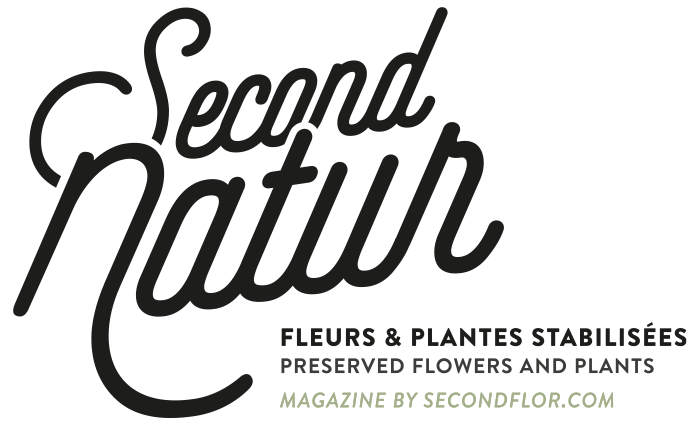His singular world comes from his numerous personal and professional encounters. Like any artist, Yannick Deplace has developed his floral art through new knowledge, new materials … He recounts in this interview his encounter with stabilized plants and the exploration of his artistic senses.
Secondnatur: Hello Yannick, can you describe in a few sentences your career and your activity?
Yannick Delplace: My career was marked by decisive encounters for my career. They also greatly influenced my style. I owe what I am to my professor of floral art: Mme Carlier; My passion for plants to my grandfather and Daniel Ost; My exuberance to John Galliano and Alexander mac Queen; And finally my attachment to the plumassery to another of my professors: Mr. Pilliard.
SN: Since when do you know the preserved flowers and plants?
YD: I learned the basics of the florist trade in CAP with flowers, foliage, live plants but also with the preserved flowers and leaves; So it’s been a while, yes, a very long time in fact.
SN: On what occasions do you use these plants?
YD: I use preserved plants on many occasions: subscriptions whose budgets are decreasing more and more but not the requirements; Wedding dresses such as brooches, buttonholes, or even the bridal bouquet. Finally, I advise them for gifts made in clinic at birth, because the preserved flowers are then the echo of memories imperishable.
SN: What do you think are the major advantages of preserved plants?
YD: They are for me a real alternative to artificial plants which are still quite “plastic”. It is also the possibility to play with shapes and textures to leave free imagination and that of our customers.
SN: What advice would you give to those who wish to start?
YD: I would be among those who think that we need to work the preserved plants as we work the fresh flowers, in a free, natural and bold way, because we have today a very wide range of products in colour, and forms. With this type of plant, we have a multitude of possibilities and unexpected but often very aesthetic conjugations. For me, it is above all a feeling of freedom that emanates from these marvels.
SN: What comparisons do you make between the fresh and the preserved flowers, mosses, and greeneries?
YD: The textures are the same, rendering, and appearance also; one is ephemeral, the other much less. Composing with preserved plants real floral creations requires a know-how and a technique inaccessible to people who would not be qualified; hence the interest in our profession to take possession of this product and make it an assertion of our profession.
SN: Are preserved plants a product for the future?
YD: You know, our trade is fighting to be recognized craft or art because it has no other use to amaze by its material, to sublimate by its technique and to surprise by its know-how. Its only weakness but which had also to make its strength is its ephemeral side. Our profession has a share of craftsmanship and a share of art, the preserved one allows us to explore this universe, which was often a source of frustration because of the time lag too short to reach it. What is not today the infinite possibilities of taking time to realize “an artistic work” not only for the pleasure of the eyes but with the guarantee of being able to fully enjoy it, return to it or correct it as we would for a canvas or a sculpture. Its future is in our hands and partly in its own.
Website / / soiephemere.com
Discover his WORK entitled “Vulcan”
SOME CREATIONS




